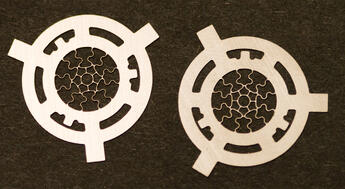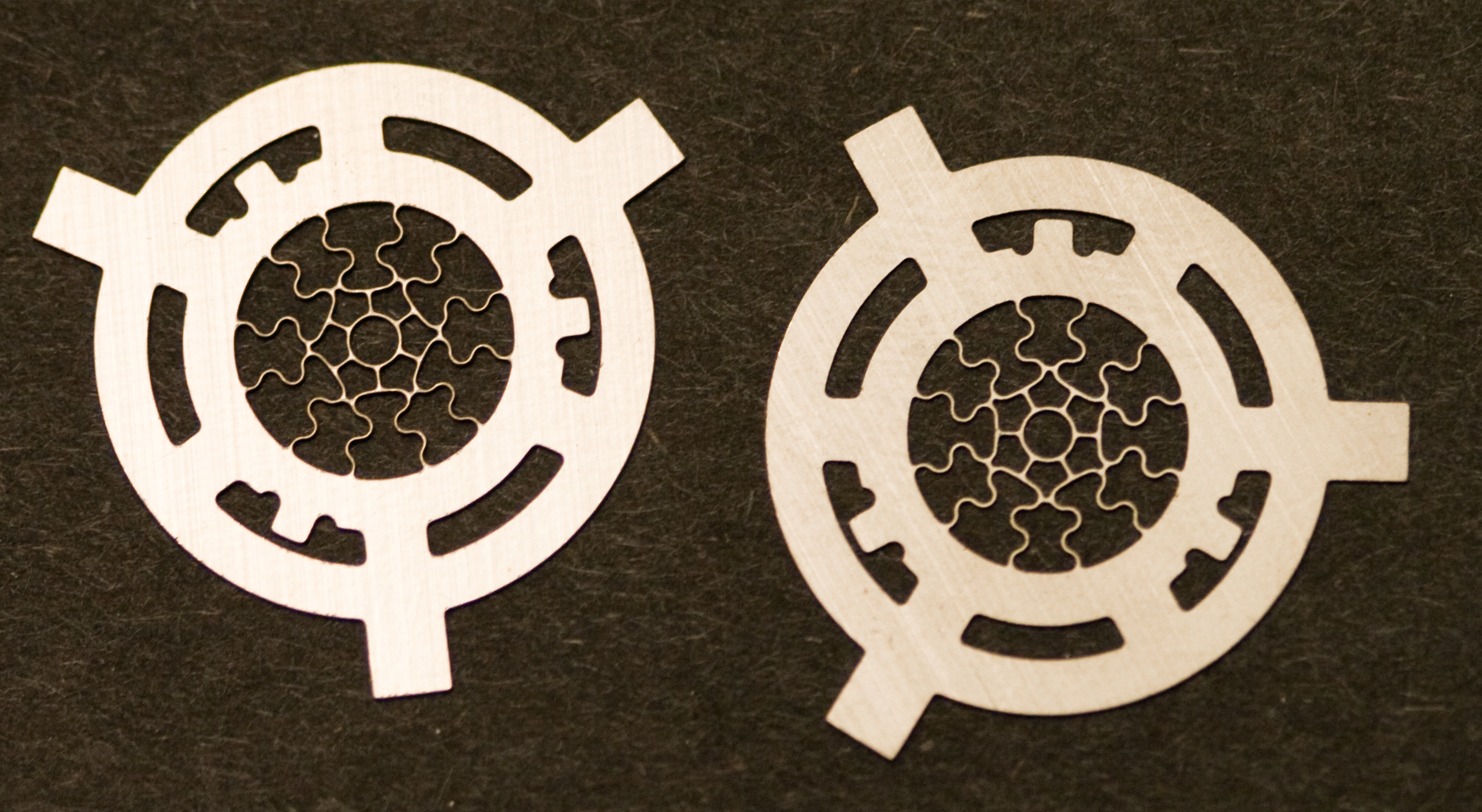What Does Photo Etching Cost?
 Key Elements of Etching Costs
Key Elements of Etching Costs
Like any other manufacturing process, chemical etching costs are the sum of a number of elements. The most variable cost elements in photo etching are: metal and photoresist, labor, and machine time. The indirect costs consist of etching chemistries including developer, etchant and stripper. Power, water and waste treatment are figured into the overhead cost rate.
Main Materials: Metal and Resist
Considering alloy and thickness, metal costs vary widely. Common alloys and gauges of copper, steel, or aluminum might run between $5 and $10 per pound. Thinner materials cost more per pound: .001 thick stainless is about $50 per pound. However, .0005 stainless costs more than $100 per pound. Beryllium copper is around $35 per pound. Molybdenum is more than $150 per pound. The cost of photoresist is a constant value per square inch.
Larger Sheets Reduce Labor per Unit
The unit of labor in photo etching is the sheet. There are seven manufacturing operations during which labor is accumulated: cutting, cleaning, laminating, printing, developing, photo etching and stripping. Each of these steps requires that the sheet be handled into and out of the operation. The amount of labor required is fairly consistent per sheet, regardless of the size of the sheet. Indirect labor is applied in inspection and packaging.
In most cases, smaller sheets accumulate labor at essentially the same rate as the larger sheets. The application of labor is relatively indifferent to the sheet size. So the sheet size is an important factor in photo etching costs.
Machine time costs accumulate in cleaning, developing, photo etching and stripping. During machine time, multiple sheets are transported by conveyors at speeds determined by the processing requirements. The etching process itself is the slowest, usually running at a few minutes per inch of travel.
We measure capacity at each step in sheets per hour, which takes into account both the labor and the machine time. Each work step has a through-rate based on sheet size. The through-rate in the etching process is based on sheet size, alloy and metal thickness. Metal alloys etch at known rates per mil (.001) of thickness so the required duration of the exposure to the etching chemistry is predictable.
Dimensional Tolerances Drive Sheet Size
Dimensional tolerances also affect the sheet size for photo etching as the tolerance variance from the center of the sheet to the edges increases with the distance. So, even a simple part with tight tolerances might have to be produced on a very small sheet. Tight tolerances also affect etching costs because the production yield of parts within tolerance decreases.
With just a little information, we can give you an estimate for photo etching your parts. The Instant Estimate feature at the top of every page at www.conardcorp.com is intended to provide that type of information as quickly as we can. With just 5 bits of information: length, width, thickness, alloy and quantity, we will provide an estimate for photo etching your parts in as little as minutes. For a firm quote, we need an engineering spec that includes exact dimensions and tolerances.
You can do that here:










